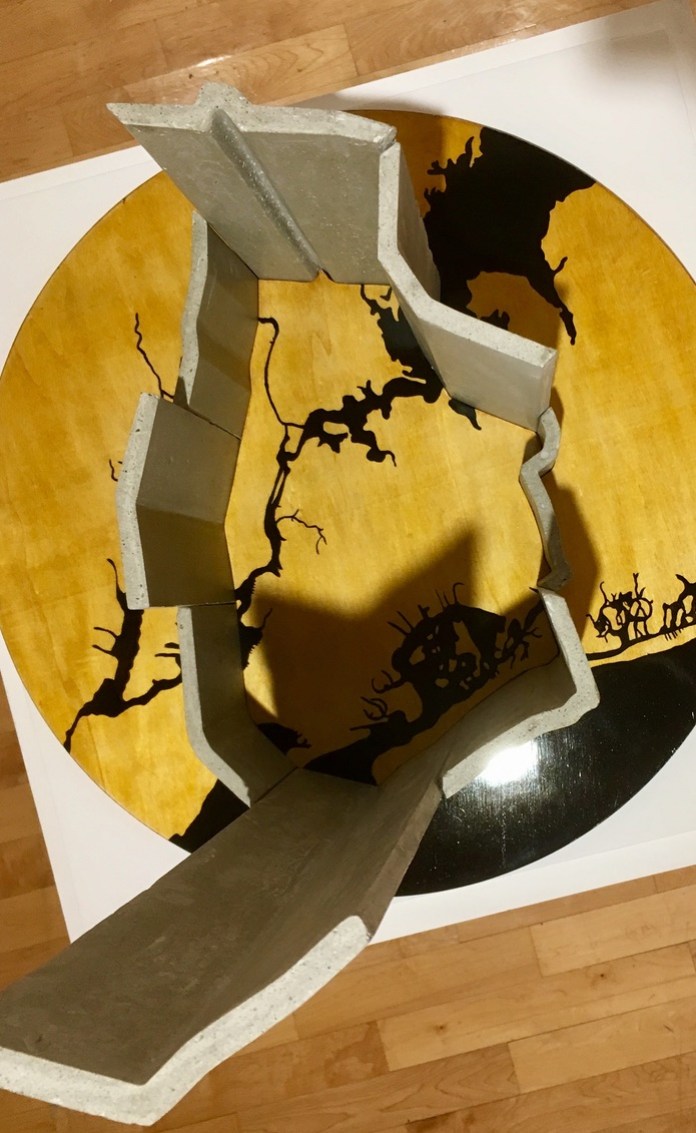Iron, bronze, 2022
This iron and bronze sculpture maps the movement of the Camp Fire that destroyed the town of Paradise, California in November 2018. It’s a map of the fire perimeter, with the majority of the sculpture in rusted iron. The boundary of the town of Paradise is in polished bronze inlaid into the larger sculpture.
The height of the sculpture represents the time at which that area burned. The lowest parts represent where the fire started. You can trace the movement of the fire by following the sculpture from the low areas to the higher areas. The Camp Fire started near the middle of the fire footprint, just east of the town of Paradise, CA.




The Impact of the Camp Fire
The Camp Fire began November 8, 2018 and was fully contained on November 25, 2018. 85 people lost their lives. It destroyed over 18,000 structures, many of them in the town of Paradise, CA. This sculpture highlights the town of Paradise, however, it’s important to note that other towns, such as Concow, Magalia, and Butte Creek Canyon were also largely destroyed. It is the deadliest and most destructive wildfire in California’s history.
The Data
The source data was downloaded from NASA FIRMS (Fire Information for Resource Management System). The dataset consists of points with timestamps indicating when burn activity was detected.
You can watch an animation of the fire progression to get a sense of how the fire spread and what the sculpture represents:
Or here’s another animated map of the same data, color coding the burned areas by day:
The Process
I wrote code that converted that raw point data into a 3D model. That model was 3D printed, then I made a mold of the printed sculpture and cast it to wax. Then I used the lost wax casting method to create the iron sculpture and the separate bronze section. Metal casting was done at the Crucible in Oakland, CA.
















































